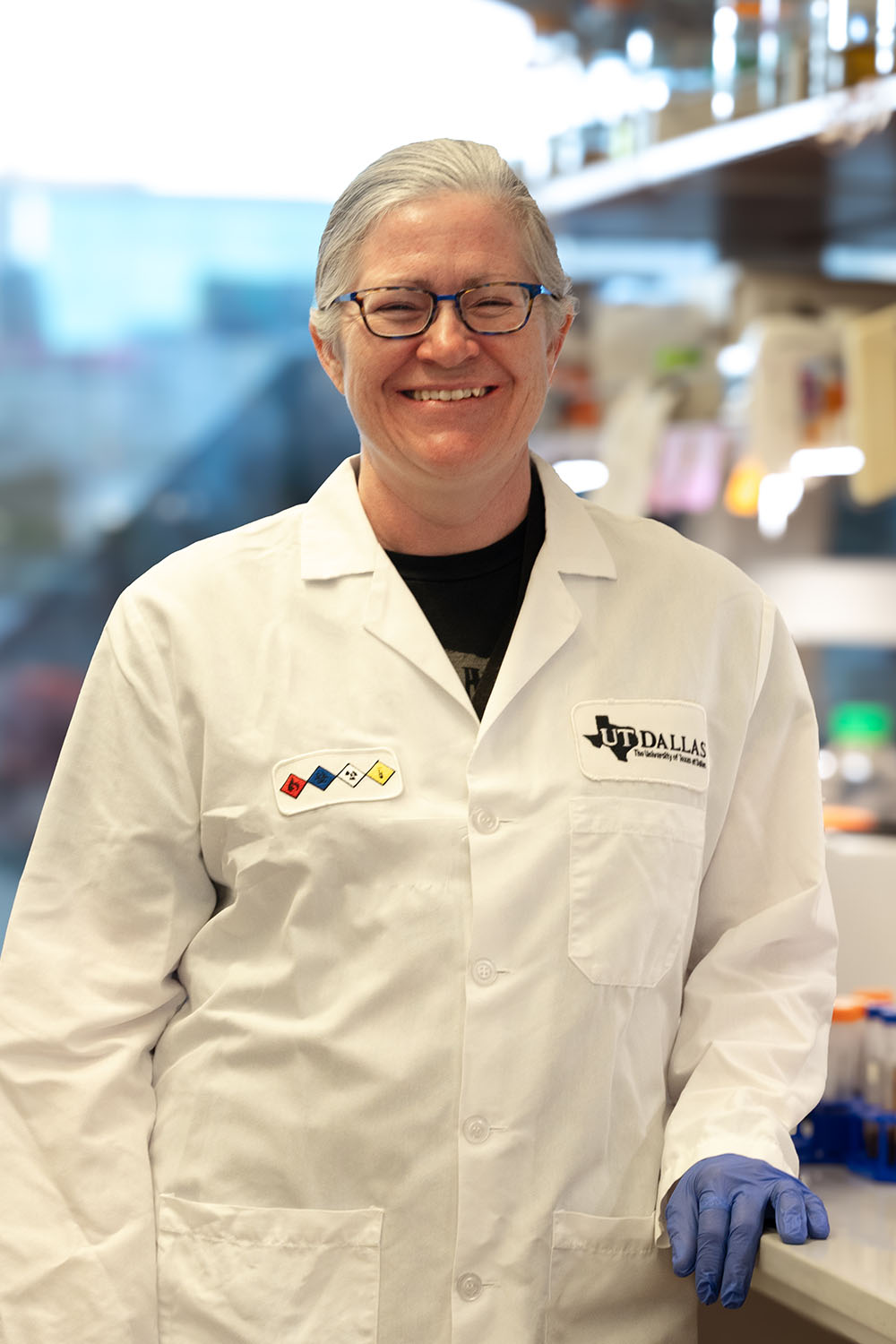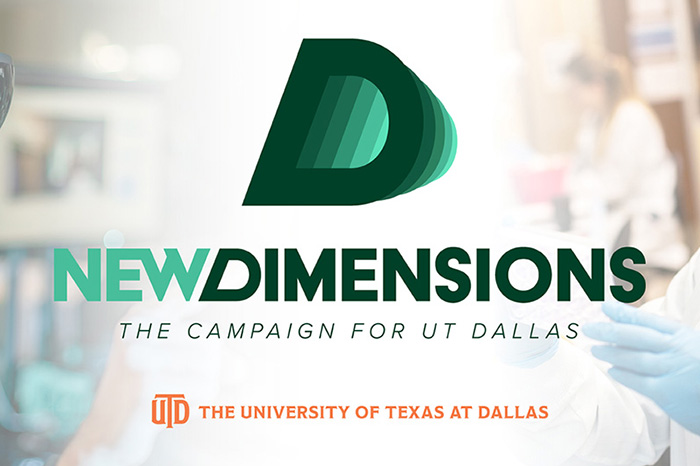
Group B Streptococcus (GBS) is a common and usually harmless bacterium that resides in the gut and genital tracts of healthy adults, but it also is a leading cause of newborn and infant sepsis and meningitis across the globe. As GBS evolves, new prevention and treatment options are crucial to neonatal and maternal health.

Dr. Kelli Palmer, professor and department head of biological sciences and Cecil H. and Ida Green Chair in Systems Biology Science at The University of Texas at Dallas, has received a $3 million, five-year federal grant to study the bacterium’s adaptive behavior during host invasion, with a specific focus on a large membrane protein known as multiple peptide resistance factor (MprF).
Palmer and her multidisciplinary team will use the funding from the National Institutes of Health (NIH) to understand better how MprF employs lipids, or fat molecules, to bypass immune system response and infect human tissue. By applying new findings to animal models, their ultimate goal is to design new antimicrobial therapies to treat and prevent GBS infections.
“The bacterial cell membrane is a lipid-based structure that plays a huge role in its ability to infect us,” said Palmer, who joined the School of Natural Sciences and Mathematics in 2012. “These lipids can help bacteria manipulate signaling pathways and avoid detection by our immune cells, kind of like camouflage.”
Despite over a century of investigation into GBS, only a fraction of its genome has been characterized.
In 2019, Palmer’s research mentee Luke Joyce MS’16, PhD’20 saw this knowledge gap as an opportunity. He performed an analysis of the lipids of the streptococcal cellular membrane to look for clues on host invasion mechanisms.
“By designing a therapy that targets one component, such as a protein, in a very selective group of bacteria, we could outsmart GBS and reduce negative effects on infant microbiomes, which are very delicate.”
Dr. Kelli Palmer, professor and department head of biological sciences in the School of Natural Sciences and Mathematics
Joyce’s instinct was right. In a 2020 collaboration with biochemist and lipidomics expert Dr. Ziqiang Guan from Duke University School of Medicine and professor of immunology and microbiology Dr. Kelly Doran from the University of Colorado School of Medicine, the team had a breakthrough.
“MprF was previously known to only synthesize one type of lipid, called Lys-PG,” said Joyce, who is now completing a postdoctoral fellowship with Doran in Colorado. “But we discovered MprF also produces a cationic, or positively charged, glycolipid called Lys-Glc-DAG that helps it enter brain tissue and promotes meningitis.”
Lysyl-phosphatidylglycerol (Lys-PG) is known to act as a shield in the GBS cell membrane to reduce the binding affinity and penetration ability of antibiotics. The team’s research determined that the new glycolipid uses its positive charge to facilitate its interaction with the negatively charged surfaces of host cells.
“To our knowledge, this glycolipid is more positively charged than any other known lipids,” said Priya Christensen MS’22, a molecular and cell biology doctoral student in Palmer’s lab. “The electrostatic attraction allows GBS to enter cells and traverse barriers, including the endothelial blood-brain barrier.”
Crossing the blood-brain barrier is a critical step for bacteria to reach and infect brain tissue, causing meningitis. In the U.S., GBS bacteria are the main cause of meningitis in a newborn’s first three months of life, and it can be fatal within 24 hours.
According to the World Health Organization, about 1 in 6 people who contract bacterial meningitis die, and 1 in 5 have severe complications, including vision or hearing loss, cerebral palsy, epilepsy and learning difficulties.
“We used gene deletion to modify the bacteria and demonstrated that GBS strains without MprF are significantly less successful in crossing the blood-brain barrier in mice, and meningitis rates dropped,” Joyce said.
The team’s findings on lysyl-glucosyl-diacylglycerol (Lys-Glc-DAG) were published in PLOS Biology in February 2022. The study was also funded by the NIH.
With the new grant from the NIH’s National Institute of Allergy and Infectious Diseases, the multidisciplinary team — which includes co-principal investigators Guan and Doran — will continue to build upon its previous discoveries and will focus on identifying more novel lipids produced by MprF in other types of bacteria.

Using a machine learning model to better understand MprF evolution, Dr. Faruck Morcos, associate professor of biological sciences at UT Dallas and co-investigator on the new grant, in collaboration with Palmer, Guan and molecular and cell biology doctoral student Jonathan Martin MS’21, recently discovered another novel lipid produced by MprF, Lys-Glc2-DAG, in pathogenic bacteria called enterococci. Enterococci are major causes of hospital-acquired infections, particularly bloodstream infections.
“Paying attention to natural selection is really important in disease control,” Morcos said. “From an evolutionary standpoint, MprF could be developing newer, better lipids to add to its arsenal for invasion. It could also be responding to environmental pressures by making a mixture of lipids. In order to disarm GBS, we need to analyze this adaptive behavior.”
The primary risk factor for neonatal GBS is maternal colonization. Approximately 50% of women who are colonized with GBS will transmit the bacteria to their newborns during childbirth, according to The American College of Obstetricians and Gynecologists. However, doctors are becoming increasingly wary of administering broad spectrum antibiotics during labor because it reduces the transfer of beneficial bacteria from the mother to the baby, which is important for the baby’s early health and immune system.

To learn more about how UT Dallas is enhancing lives through transformative research, explore New Dimensions: The Campaign for UT Dallas.
“Antibiotic resistance in GBS is becoming a real concern,” Palmer said. “By designing a therapy that targets one component, such as a protein, in a very selective group of bacteria, we could outsmart GBS and reduce negative effects on infant microbiomes, which are very delicate.
“Understanding how surface proteins like MprF function and contribute to GBS pathogenesis opens the door for targeted treatment options that could save lives,” she said.
Joyce said the training and mentorship he received in Palmer’s lab prepared him well for working within a multidisciplinary research team.
“Going from more conceptual molecular studies at UT Dallas to now using animal models in a medical setting has been gratifying,” Joyce said. “We’re not just working on theories; we are applying new knowledge to real-life biomedical research. It’s encouraging to see a spectrum of experts come together to tackle one issue.”
This story includes reporting by freelance contributor Eric Butterman.
